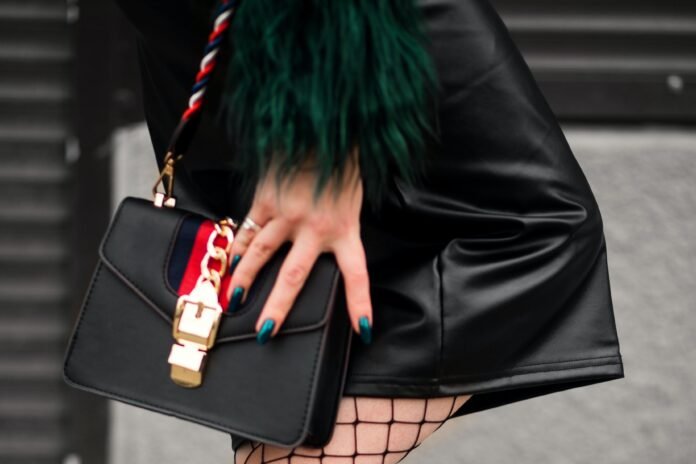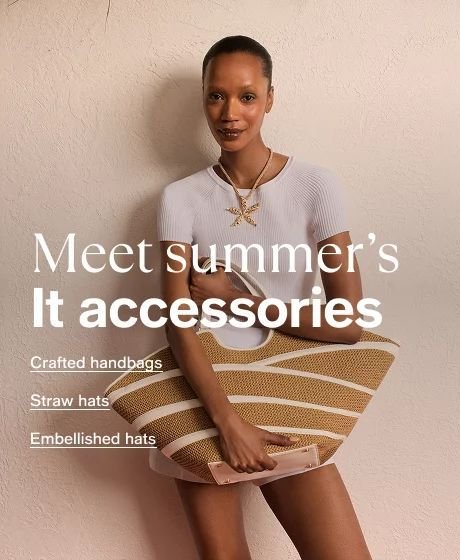Clothing is now more powerful than ever before–it speaks louder than words, transcending language barriers to unify people around the world. From the red hats of Trump supporters to the yellow ribbons worn in support of the Hong Kong protesters, fashion has become an integral part of global diplomacy. In this article, we take a deep dive into the concept of “Fashion Diplomacy” to explore how and why clothing is used as a symbolic tool to navigate international relations.
1. The Art of Fashion Diplomacy
is a practice of using powerful elements of fashion to influence and shape links between people, cultures and nations throughout the world. It is often used by political and diplomatic leaders in the public arena to project national and individual identity as well as promote international cultural exchange.
The key to successful Fashion Diplomacy lies in the ability to design and create garments and accessories that are definitive to the place of origin and have a strong connection to the history and culture of the nation. Such pieces have the potential to open up borders, break down barriers and bridge cultures. They also have the capacity to build positive relationships and strengthen communication between global countries.
Fashion diplomacy is a powerful tool and should be employed judiciously to ensure it is used to the benefit of humanity. Here is a list of impacts it can have:
- Use of fashion to share cultural awareness
- Dress as a representation of national policy
- Clothing as a means of uniting people under a single banner
- Clothing as a weapon for peace
- Celebrating cultural inclusion
- Utilising fashion to foster an understanding between cultures
The most notable example of fashion diplomacy in action is The Royal Wardrobe for two UK State Visits in 2011 and 2012. This involved collaboration between the Royal Household and British Fashion Council to design and create iconic, culturally-themed outfits which showcased the UK’s cutting-edge fashion industry. The mission was to promote Britain’s culture, economy and creative talent to the world and it was without doubt a major success.
Fashion diplomacy is not only limited to the upper echelons of political and diplomatic arenas. It can be employed by all of us in everyday life to positively influence and shape relationships with others. So, don’t be afraid to get creative with your wardrobe – it could have untold benefits….
2. Clothed in Power: Dressing for International Relations
In international diplomacy and politics, the way one dresses can greatly influence the perception of one’s strengths, personality and authority. Clothing plays a crucial and often overlooked role in evoking respect, signaling power and intent to negotiating partners.
Head-to-toe assessments of diplomats and politicians beyond their home turf is common and expected. How a person appears in the eyes of others can mean the difference in receiving a desired outcome from a meeting or not. Those negotiating put forth immense effort to secure bargaining chips and wear tailored garments to underscore their respect and make a lasting impression.
For the man, custom-made, elegantly-suited looks are the go-to. Quality fabrics, colors, and embellishments like cufflinks and pocket squares are agreeable components to include when dressed for diplomatic affairs. Modest power-dressing has been found to be especially helpful for female diplomats, as attention is drawn away from her body shape and instead focused on her words and actions.
Aside from using fashion as a medium to send allegorical messages in the international political arena, one’s wardrobe also conveys personal beliefs. The cultural embroidery, fabrics and prints at the disposal of politicians offer a way of representing their ethnic origin. By wearing home-town traditional attire, leaders are able to show publicly how proud they stand of their heritage while showcasing their commitment to national offices at the same time.
- Material: Not all fabrics are suited for every occasion. An assessment of solace, durability and climate are crucial.
- Fit: Accents like shoulder pads and shirt collars can have a big impact on a dignitary’s stance.
- Style: Having a signature look goes a long way.
Ultimately, clothing can be influential in international relations as much as words, and knowing the ins and outs of suitable foreign attire is an advantageous tool to possess. Dress code in meetings is essential in acquiring a person’s cooperation, trust, interest and friendship.
3. How Clothing Establishes Politically Significance
Through generations of use, clothing has been used to indicate political significance. its use has been shaped by generational patterns and has been used to make a statement about one’s standing in the modern political landscape. Here are three ways that clothing can be used to make a politically significant statement:
- The Color: Colors have long been associated with particular beliefs and views in a society.
- The Fabric: Clothing made with specific fabrics or styles of fabric, such as hemp or linen, can also indicate political beliefs.
- The Symbolism: Symbols such as the American Flag or the symbol of a political party may be used on clothing to indicate political beliefs.
Starting with the color, it is a world-wide phenomenon that certain colors are ascribed a more positive or negative role depending on geography, culture, and religion. For example, white in China is an auspicious color, generally worn during special occasions or on a wedding day. However, when living in the Arabian peninsula, a white thawb is a traditional form of clothing for men, symbolizing respect and humility. While in India, white is a color of mourning, representing sadness and sorrow. The symbolic meanings of colors can be a powerful form of representing political standing.
Fabric choice is also used to indicate political beliefs and convictions. As we all know, some fabrics are more expensive than others, and the cost of the fabric used can give a sense of one’s wealth or cleverness. For example, a high-end fashion designer is likely to use more expensive fabrics in their clothing to indicate the cost of the garments, but also the quality. Similarly, the use of hemp fabrics is often associated with environmentalist beliefs, as hemp is considered to be a more environmentally friendly crop than other fabrics such as cotton.
Finally, clothing can also feature symbolism associated with political beliefs. For example, a U.S. citizen may choose to wear a red baseball cap featuring the American flag on it, signifying their patriotism and commitment to the U.S. Similarly, an individual may choose to adorn their clothing with symbols of the local political party, showing support for their particular ideals.
In conclusion, clothing can be used to establish political significance through the use of colors, fabrics, and symbolism. These methods of communicating political standing can be used to make a bold statement or simply a slight indication. Either way, its use is ubiquitous and pervasive, and it’s definitely here to stay.
4. Clothing as a Tool for Diplomatic Gains
In diplomatic negotiations, clothing is often used as a tool to influence the outcome of negotiations. Whether it is the United States President in a power suit or the Queen of England making a statement with her hat, the fashion choices of diplomats often speak louder than words.
Clothing serves multiple purposes when it comes to diplomatic encounters. Firstly, it communicates the relevant authority of the diplomat—the clothing, often ornate or made of fine materials, speaks of status and power. Secondly, it displays cultural identity, showing respect for the other party and opening the door to compromise. Lastly, it offers even deeper symbolism. For example, an American diplomat in traditional Native American clothing conveys an understanding and respect for the indigenous culture of the country.
In addition to the symbolic aspects of clothing, the design of the garments can also play a role in negotiations. Outfits that feature bright colors are often chosen to help ease tensions and create a more jovial atmosphere. There is also value in choosing clothing that is identical to that of the party you are negotiating with. The unspoken agreement that comes with wearing matching outfits solidifies a shared sense of respect between the parties, allowing negotiations to move forward.
- Clothing communicates authority, status and power
- Clothing displays cultural identity, showing respect to the other party
- Clothing offers deeper symbolism, conveying understanding for the culture
- Clothing helps ease tensions and create a more jovial atmosphere
- Identical outfits creates a shared sense of respect between the parties
Diplomats always need to be mindful of the message they are sending when they select their attire for any diplomatic engagement. Whether trying to restore diplomatic ties, promote a new solution or gain a concession, clothing can provide the perfect touchstone to ensure the message is well-received.
5. The Art of Political Expression Through Dress
It’s no secret that clothing has been used as a way to express political messages for centuries. Whether as a symbol of rebellion, an identifier of a movement’s values, or a silent protest, fashion has long been part of the political language. As such, it has come to represent more than just an aesthetic statement – it is an extension of a person’s beliefs and values. Here are some examples of how people have used fashion to express their political statements:
- Gender Equality: With her androgynous style and choice to wear trousers, Marlene Dietrich was one of the first women to embrace gender equality through fashion during the 1930s. Incorporating masculine elements into her style was a bold move that helped empower women to express their own sense of identity.
- Social Awareness: In the 1960s, African-American civil rights activists proudly wore Black suits and African Kente cloth to demonstrate their commitment to equal rights and their own sense of African-American pride.
- Anti-Establishment: During the punk rock movement of the 1970s, young people adopted a striking and aggressive sartorial style as a way to show their rejection of societal norms.
- Universal Peace: In the late 1960s, the “flower power” trend sought to spread a message of universal peace and love by wearing brightly coloured clothing, often decorated with hand-painted flowers.
continues to evolve and remain relevant to this day. Whether it’s wearing a “pussy hat” to a Women’s March or a t-shirt featuring a protest slogan, clothing is a powerful and immediate way to make a statement. Dress can also be a subtle signifier – a way to convey your political stance without explicitly saying it. In this way, clothes can be used both to stand out and to blend in.
Ultimately, clothing is an important way to show support for a cause or political movement. By wearing the clothes and colours associated with a particular philosophy, people can demonstrate their solidarity while making a political statement about the type of society they wish to live in.
No matter the context, fashion is a powerful tool that has the capability to influence relationships between nations. Understanding the role clothing plays in international relations is an important part of today’s ever-changing geopolitical landscape. It may be the silky fabric of a formal dress that helps a diplomat make their point, or it might be a loud, colorful accessory that can help break barriers and create a more welcoming atmosphere. It is up to us to learn the importance of fashion diplomacy and find our own ways of displaying mutual respect to other nations – a process that will be essential for a better and more unified world.




